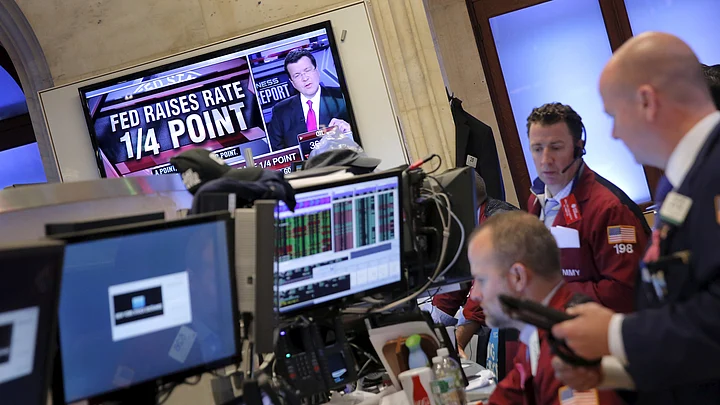The US central bank raised the benchmark borrowing rate on Wednesday, 19 December, but gave the clearest sign to date that it will go slow on additional increases as it watches the economy.
The Federal Reserve's move seems certain to anger President Donald Trump, who has attacked the central bank repeatedly on Twitter for even considering a fourth hike this year in the key interest rate.
But the Fed delivered on what some economists called a "dovish hike," raising the target range by 0.25 point, with 2.5 percent at the high end, while signalling caution moving forward, especially as it keeps an eye on international developments.
Risks Are ‘Roughly Balanced’
While economic risks remain "roughly balanced," the Fed statement after the two-day policy meeting said the central bank "will continue to monitor global economic and financial developments and assess their implications for the economic outlook."
The US economy is facing potential challenges from Trump's trade war, a slowing Chinese economy, and the potential economic and financial turmoil that could come in the wake of Britain's exit from the European Union.
Federal Reserve Chairman Jerome Powell will hold a press conference at 1:00 am on Friday (IST) to explain the central bank's thinking.
Increasing signs the US economy may have peaked has caused stock markets to crumble in recent weeks, with Wall Street wiping out all of its 2018 gains.
The policy-setting Federal Open Market Committee also released its quarterly forecast showing officials see economic growth moderating so that they now expect to increase the benchmark interest rate only twice next year rather than three times, as forecast in September.
Five Fed officials slashed their forecast, and now expect two or fewer hikes rather than four or more in the coming year.
The Fed's median forecast for GDP growth was cut to 2.3 percent for 2019 from 2.5 percent, which in turn brought the inflation outlook once again below the Fed's two percent target, even with unemployment remaining at a 50-year low of 3.5 percent next year.
Even with the continued strong job gains, wages have not accelerated, and prices have crept up only gradually, removing pressure on the central bank to put the brakes on the US economy.
Growth is seen slowing further to two percent in 2020 and 1.8 percent in 2021.
(Published in an arrangement with PTI)
(At The Quint, we question everything. Play an active role in shaping our journalism by becoming a member today.)
